IndyCar working to enrich team owners: 'We can’t eliminate opportunity for continued growth.'
As the clouds unloaded atop World Wide Technology last August, Mike Shank was nestled inside one of Meyer Shank Racing’s transporters alongside commercial director Tim Meyer to map out MSR’s next two years.
There was a hint of frustration and befuddlement in Shank’s voice. Between May 2021 and January 2023, MSR won an Indy 500, the Rolex 24 overall (twice) and an IMSA title in the top prototype class, all while successfully courting two legendary IndyCar drivers into full-time rides.
The next 10 months were soul crushing. MSR was found to have manipulated tire pressure during its 2023 Rolex 24 victory – leading to a five-figure fine, a massive points penalty and a stain that took time to fade. The loss of its factory backing from Acura followed, leaving Shank attempting to keep his sportscar team members employed on the IndyCar side, all while swapping out his two full-time drivers after few notable results over two years.
Shank’s last four years in racing have been an all-too-hands-on lesson in the volatility of the sport, and there have been times, the motorsports lifer admits, that have left him questioning if it all makes sense.
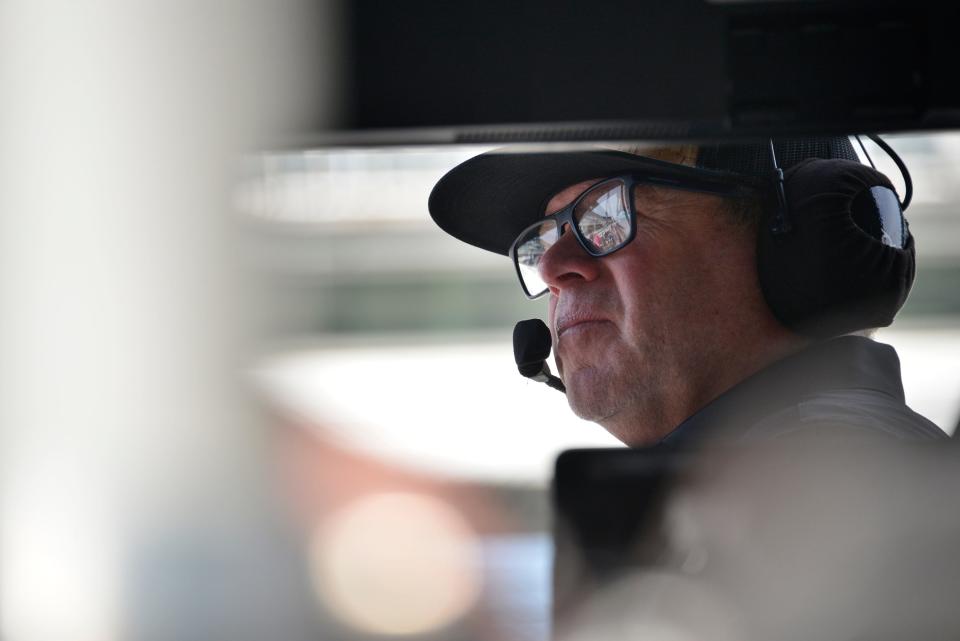
“I try to run this team as a business that’s looking for a profit,” Shank, who folded ex-Sirius XM CEO Jim Meyer into an ownership role in the spring of 2018, told IndyStar in August of last year. Since Meyer’s major investment, MSR has also handed minority stakes to Liberty Media (2020) and Helio Castroneves (2023).
“Some of these teams don’t care about profit," Shank added. "They’re just trying not to lose money. And I’m questioning myself today. ‘Is it even possible to make money racing cars at this level?’”
In IndyCar, specifically, balancing the books has been a steep task. Unlike team owners in the NBA and NFL, or NASCAR and Formula 1, there is little ‘value’ in being one of the select few operating one of the sport’s entities – beyond street cred, notoriety, a leg up in the sponsorship game and a bunch of mostly depreciating assets.
“I think we’ve reached the point where there’s almost too many cars and where any ‘Joe Blow’ can rock-up and start racing,” Andretti Global COO Rob Edwards told IndyStar late last year. “Any other topline pro sports league has a level the teams (need to be) competing at.”
To Shank, Edwards and other executives’ overwhelming delight, Penske Entertainment Corp. officials have begun laying the groundwork for a system that would offer them ownership over a finite number of 'charters' that would guarantee a team full-time competition in the sport, as well as an annual cut of IndyCar’s revenue. While the latter feature is no different than the series’ current Leaders Circle program that (with some caveats) pays the previous season’s top-22 entrants in points roughly $1 million annually, the effort to more formally restrict and define IndyCar’s full-season entrants would deliver concrete value to being on the IndyCar grid.
“Who’s not going to be on board with something that provides more value to what we are as a business?” Ed Carpenter told IndyStar last year. “But it has to be done in a way that’s good for everybody and allows the sport to continue growing. We can’t eliminate the opportunity we have for continued growth.”
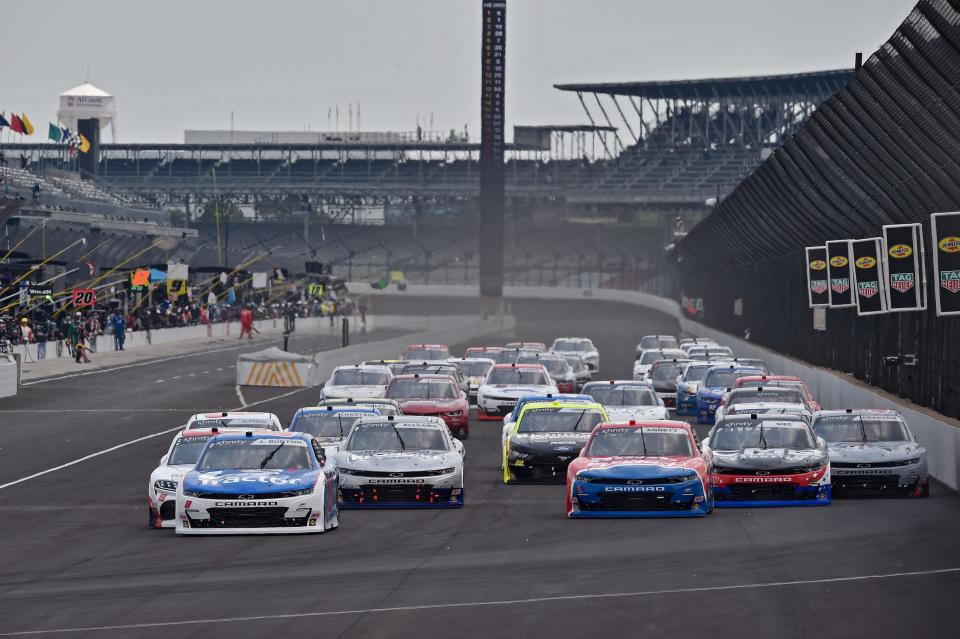
How NASCAR uses the charter model
NASCAR’s charter system, which launched at the start of the 2016 season, is the model most often referenced in talks with IndyCar team owners about what a new system could look like. NASCAR officials struck an agreement with the then-newly-formed Race Team Alliance (RTA) made up of team owners across the sport to dole out 36 charters across 19 teams.
Owning a NASCAR charter gives team owners a cut of the sport’s lucrative broadcast rights deal, with teams receiving a 25% share. Depending on on-track success, recent reports indicate a single charter grants owners of the top-performing teams $8 million-$10 million in annual revenue under the sport’s current media rights deal; lesser-performing teams take home half of that. Additionally, charter ownership guarantees a team a spot on the starting grid for every race (including the Daytona 500).
In order to keep the grid from being thoroughly dominated by teams gobbling up charters, NASCAR teams are limited to running four cars.
After NASCAR awarded those original 36 charters free of charge, teams can buy, sell or lease charters – with certain parameters and according to series approval. Once going for a couple million dollars, Spire purchased a charter from Furniture Row Racing for $6 million just one year after FRR won its 2017 championship. Prices shot past $10 million in mid-2021 as the Next Gen car ushered in lower operating costs and the series inched toward what would amount to a 40% increase in its next media rights deal that begins in 2025.
Last year, Spire bought a charter from Live Fast for a rumored $40 million – the crowning example of how structured scarcity in motorsports can drive revenue to teams looking to cash-in.
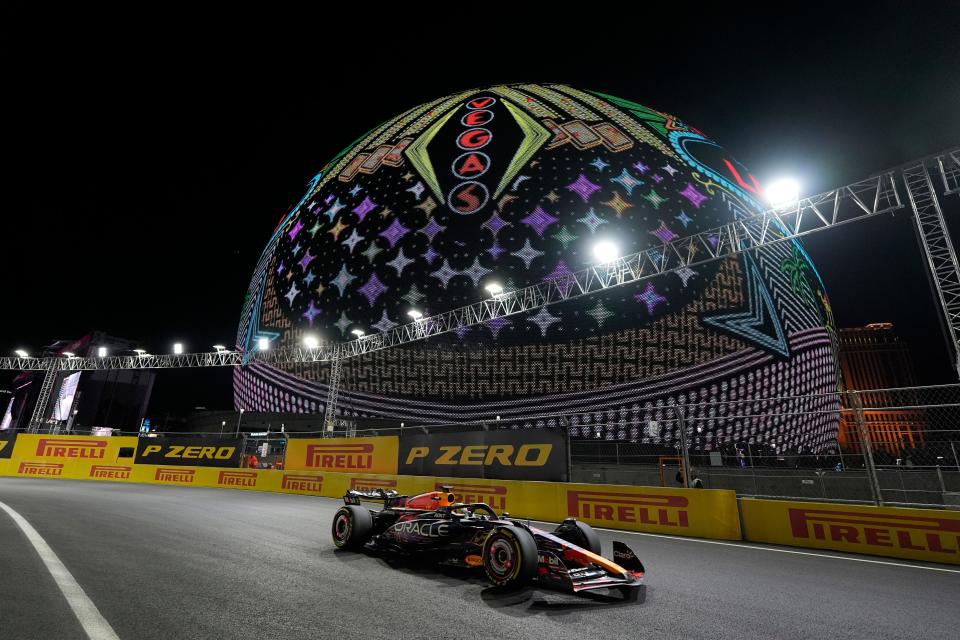
How F1 limits membership, drives team value
Since 2017, F1 has had 10 full-time two-car teams on its grid, with the ability of expanding to 12 teams (and 24 cars) under the latest Concorde Agreement that binds current teams, Formula 1 management and the FIA governing body.
F1 management has frequently said recently it feels no urgency to grow, which it backed up in its thorough denial Wednesday of Andretti Global's bid to join the grid in 2025 or 2026. Even before F1's decision on the Andretti project, the bulk of the paddock's 10 teams have openly feared revenue losses if their pool of revenue were to be split 11 ways instead of 10.
F1 denies Andretti bid: Series doubts hopeful new team's competitiveness, value but leaves door open for future
Rapidly-rising interest in F1 in the U.S, Liberty Media’s aggressive growth model since purchasing the series in 2017 and the sport’s exclusivity has injected a serious boost in team valuations. According to a Forbes report from last summer, Ferrari’s famed F1 program is worth $3.9 billion, making it the 45th-most-valuable sports franchise in the world. Along with Mercedes (47th, $3.8 billion), the pair make F1’s first appearance on the top-50 list in 10 years; valuations for F1 teams have grown an average of 276% over the last four years.
Under the current Concorde Agreement, prospective new teams must pay an entry fee of $200 million. That’s expected to rise to at least $600 million in the next agreement in 2026.

For IndyCar, it's 'who's in and how many'
Penske Entertainment Corp. president and CEO Mark Miles has a vision for IndyCar’s version of such a revamped membership model, and he says it’s nowhere near as complicated.
“I think we can keep it pretty simple. I don’t think it’s going to be what you’d call ‘franchises,’ and it’s not about governance,” he told IndyStar last fall. “It’s going to be about who’s in and how many.”
At the time, Miles estimated the pool of charter-like entries IndyCar would grant would range from 22 to 25, with a cap on the number of teams for an owner. Whether that would be three, as it’s currently set, and whether teams would be prohibited from running non-chartered full-time entries beyond that cap (like NASCAR’s current rules) is unknown.
Miles did note that a 25-charter model wouldn’t cut out anyone currently eligible for the Leaders Circle field from being charter-eligible. Capping teams at a max of three charters would currently only affect Chip Ganassi Racing, who will run five full-time cars in the 27-car IndyCar field for 2024.
Miles told IndyStar in September he hoped to have a system laid out before the start of this season, in order to give teams proper notice in case the final arrangement (which could be launched at the start of 2025) might be impacted by the results of the 17-race slate. A series source close to the discussions told IndyStar earlier this year that IndyCar executives have yet to zero in on a final system.
Though the status of present talks is not known, determining specifics of such a system may not be as simple as Miles hinted.
The injuries don't show on the outside': Simon Pagenaud on ups and down of crash rehab
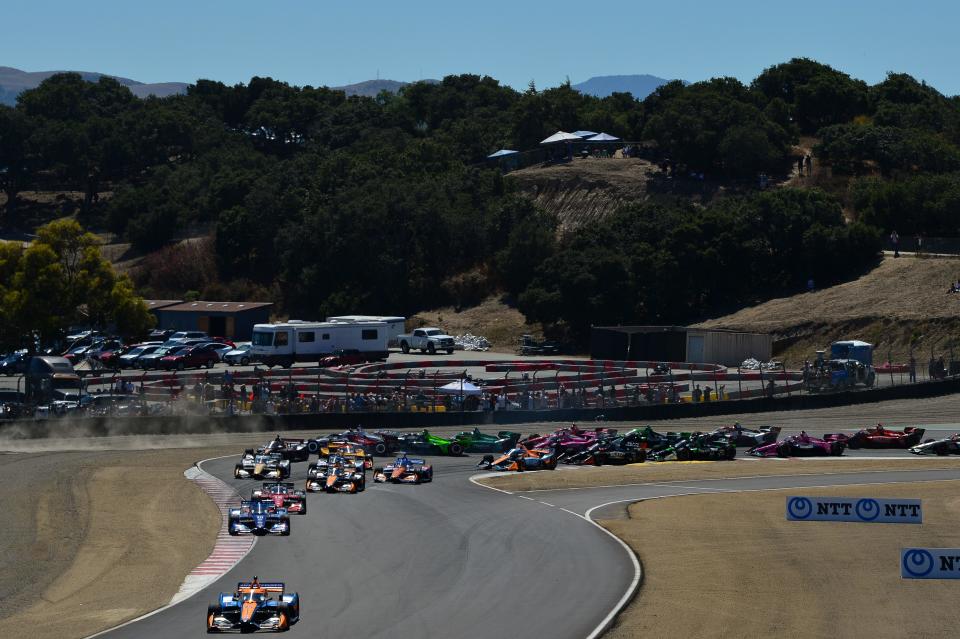
How NASCAR's model would look in IndyCar
When NASCAR launched it’s 36 charter system, series officials said they landed at that number by virtue of the minimum number of cars each team attempted to qualify for each race the previous three years. Alongside that, it allowed up to four non-chartered entries to run each race, giving young teams ramping up or veteran ones looking to expand the chance to run in some capacity as they search for a charter to purchase.
Using a similar model in IndyCar while considering the 2022-24 seasons would land series officials at 24: two each from AJ Foyt Racing, Ed Carpenter Racing, Dale Coyne Racing, Meyer Shank Racing and Arrow McLaren; three cars each for Rahal Letterman Lanigan Racing, Team Penske and Andretti Global; four for Chip Ganassi Racing; and just one for Juncos Hollinger Racing.
One could argue that that number – and that makeup, specifically – isn’t reflective of IndyCar's recent growth from two of its more promising teams (JHR and Arrow McLaren), particularly when you consider all five of their combined full-time entries in 2023 finished in the top-22 in points to qualify for the 2024 Leaders Circle program.
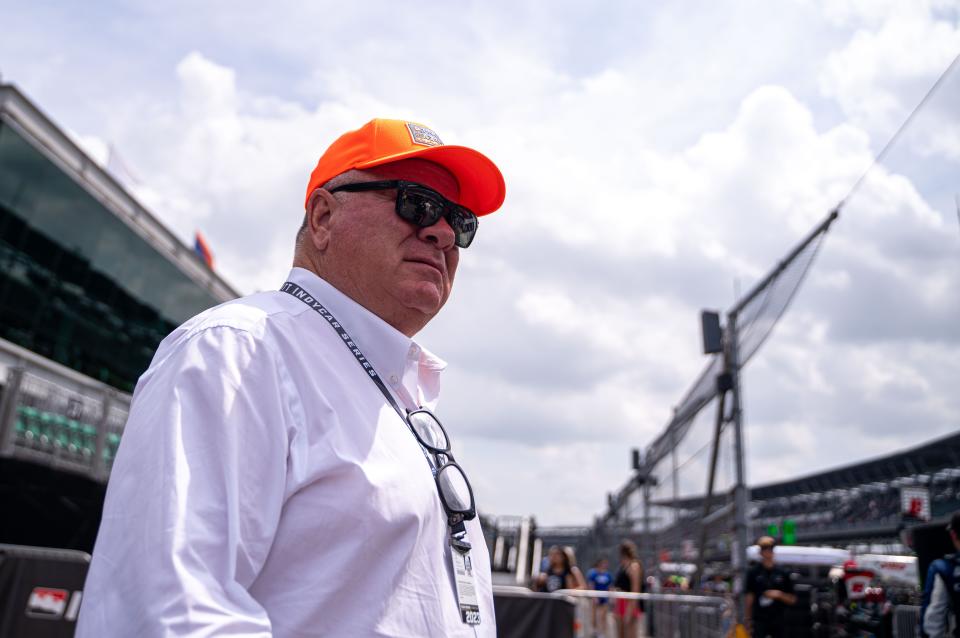
Could Ganassi be forced to drop two of its five entries?
IndyCar could shrink to 25 spots for its new membership system by leaving its smaller teams as-is and instituting a cap on the number of cars a team can operate. A three-car limit would only affect CGR, as it expands from four to five full-time cars for 2024.
Such a move would appease some in the paddock who have long felt the big budget teams’ ability to run as many cars as they so choose to be a competitive issue.
“I’m not a huge fan of these teams running four or five cars,” AJ Foyt Racing president Larry Foyt told IndyStar last fall. “I think you have teams getting a little too powerful at that point, and I think the thing is, with a lot of the tracks we go to, 28 cars isn’t sustainable, so that’s going to have to come down a little bit. How IndyCar addresses that will be interesting.”
'Trust the process': A difficult offseason has raised questions about IndyCar
NASCAR’s four-car limit, though, was in place for a decade before the launch of the charter system. After instituting it for the 2006 season, the sanctioning body worked with then-Roush Racing – the only team at the time running five full-time cars – and permitted Roush to run five cars until the start of 2010.
IndyCar would likely need to give CGR the same leniency, depending on the team’s current driver and sponsor contracts, if they wish to move in that direction, further complicating the series' urgent need to launch this new membership system.
“We need to create scarcity in what we’re doing today for the value of people like Jim (Meyer) and Liberty and all the team owners. We need a model where we can have value in that investment,” Shank said. “It is, to me, priority No. 1 – over everything.
“It would make me confident to keep investing. Otherwise, I’m looking at 30 cents on the dollar with our assets, and that’s all I’ve got. That’s not a great feeling.”
IndyCar could instead cap a team's number of chartered entries it owns, while allowing teams to run an unlimited number of unchartered ones – essentially mirroring how they presently cap a team's Leaders Circle entrants at three but have no limit on full-time programs.
If there's no cap, the current grid would be full at 27 full-time cars – stifling growth opportunities for prospective teams, outside purchasing a charter without having tested the waters first.
Though the series has fielded 10 full-time teams for several years now, it also saw seven partner-level or Indy 500-only teams participate last season. Five others have done so since 2020. Hendrick Motorsports will make its debut at this year’s 500, and Pratt Miller Motorsports and Prema Racing have made public statements regarding future expansion into the series. Without limiting the number of cars teams currently active in the series can run, all those smaller, hopeful teams can count on is purchasing a charter once this new system launches.
That level of scarcity, though, could offer a hot market for current teams expecting to land a charter, should they wish to downsize.
Insider: IndyCar's recent setbacks raise questions about series' future
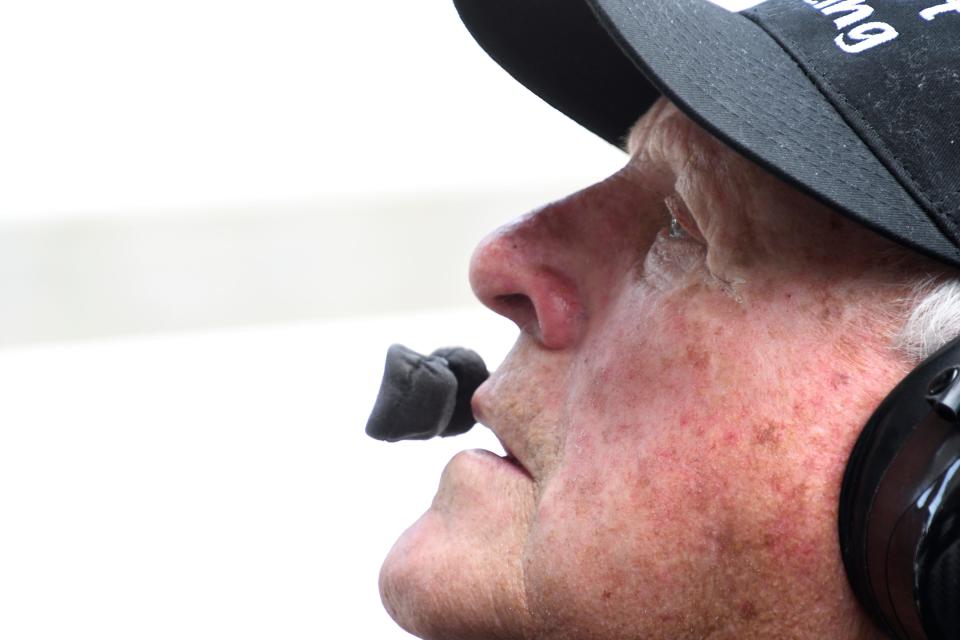
Staying with the results-based Leaders Circle model
A third route IndyCar leadership could take towards a lucrative membership program would be to reward on-track results, similar to how its Leaders Circle program has worked.
Perhaps in combination with a cap on chartered entries per team, the series could come up with a formula to pare its membership program down to 22 entries.
Such a move, though, would seem likely to disproportionately effect its smaller, less-competitive teams that have been here for decades (Foyt and Coyne) or have been grinding for several years to slowly build from nothing (MSR and JHR). In each of the last three seasons, AJ Foyt Racing has had at least one car outside the top-22 in points and saw both its cars miss out on Leaders Circle spots after 2022. Dale Coyne Racing’s No. 51 entry will be without a precious $1 million bump in funding this season after finishing outside the cutline, as did Meyer Shank Racing’s No. 60 and a now-defunct Andretti No. 29.
Insider: How Andretti lost more than $1 million in 2024 Leaders Circle payments
Even a move to cap top teams from more than three chartered entries, along with this cut-down based on recent performance, could leave some of the series’ midfield teams with just one car in position to make much-needed money from the series, with the other running only off of hard-to-find sponsorship, or pay a large sum of money to purchase one of the first charters.
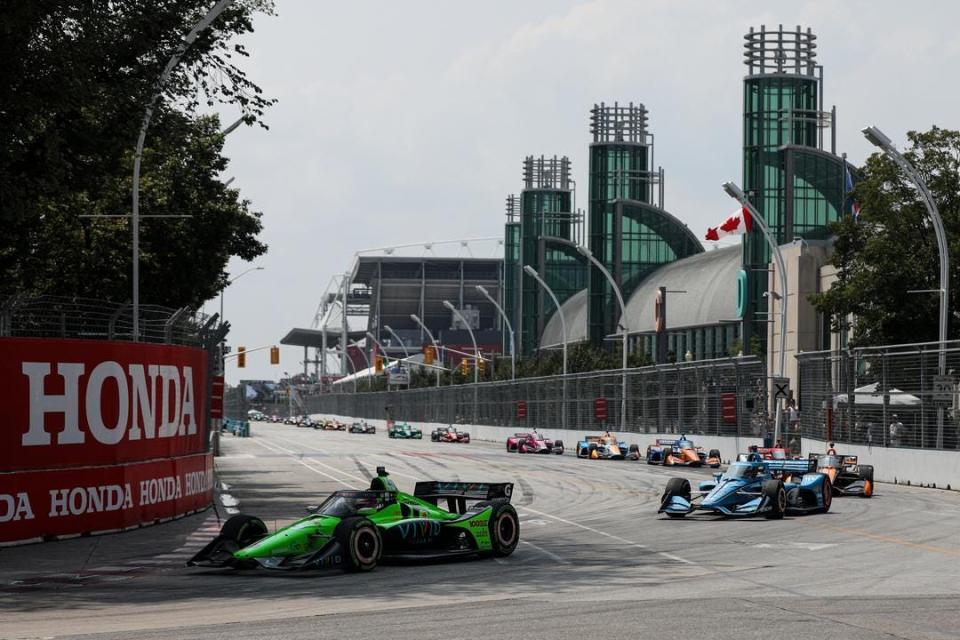
Why IndyCar can't have more than 27 charters
Any addition to IndyCar’s financial incentive program beyond the current 22 would mean more money out of pocket – likely $1 million or more each per car per year – for Penske Entertainment. Just last year, Penske Entertainment docked teams’ expected Leaders Circle checks by $150,000 per car to help boost IndyCar's marketing budget. Miles told IndyStar in September that Penske Entertainment was eyeing at least a $200,000 per Leaders Circle entry increase for 2024, to around $1.1 million (only $50,000 higher than before it was temporarily lowered).
That number could reach $1.3 million, Miles said, if the series ran a rumored post-season exhibition race in Argentina that, through its large sanctioning fee, would deliver Leaders Circle teams an additional $200,000 per car.
Already, the series has committed to paying teams collectively at least $4.4 million more than a year ago. Adding additional teams to that pool would add millions more in expenses -- a potential non-starter for IndyCar at the moment.
Additionally, the series’ inability to lure a third engine manufacturer has put an informal cap on the number of full-time entries Honda and Chevy are willing to support – so much so that Honda has threatened to bolt when its contract expires after 2026 if costs aren’t reduced. Even if that were to change, Mid-Ohio and Toronto are unable to safely accommodate more than 27 cars on pitlane as currently constructed.
'A good problem to have': IndyCar's unexpected growth could pose future headaches
These limits only further complicate IndyCar's dilemma, as it aims to develop this new membership system that would both better support its longtime teams as well as offer feasible entry options for prospective owners.
“I think it’s going to take some time, but I think we’re going to get to where we all want to go,” Bobby Rahal told IndyStar in September. “It may take a little more time than we’d like, but ultimately, I think we have the most committed, passionate owners in motor racing, and things will happen.
“Will they happen as fast as we all want? Maybe, maybe not. But at least we’re going in the right direction."
This article originally appeared on Indianapolis Star: IndyCar exploring NASCAR-like charter system to increase team value
